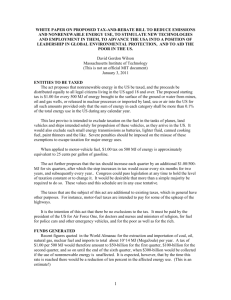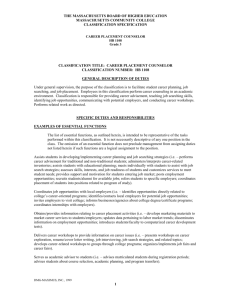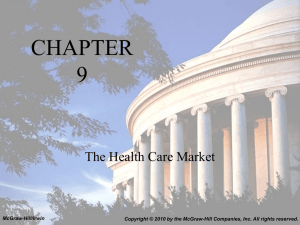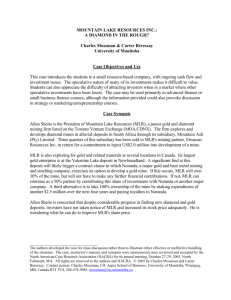Michelle Zettergren
advertisement
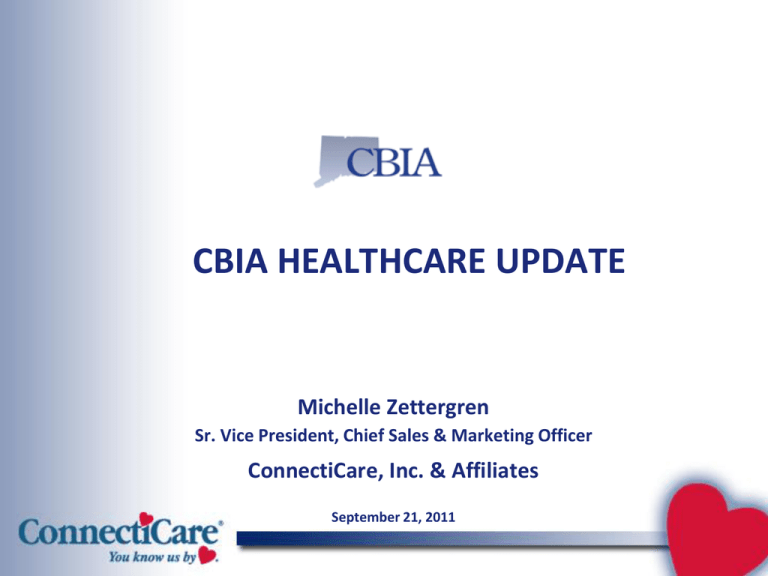
CBIA HEALTHCARE UPDATE Michelle Zettergren Sr. Vice President, Chief Sales & Marketing Officer ConnectiCare, Inc. & Affiliates September 21, 2011 The Environment Today • U.S. Census - 49 million Americans uninsured in 2009 - 49.9 million Americans uninsured in 2010 • Worst recession in the last 80 years • Inflation-adjusted median household income in the U.S. fell 2.3% in 2010, to $49,445 Uninsured Rates • Texas • New Mexico • Nevada • Mississippi • Florida • South Carolina • Louisiana • California • Georgia • Arizona 24.6% 21.6% 21.3% 21.1% 20.8% 20.6% 20.0% 19.4% 19.4% 19.1% New Jersey • New York • Rhode Island • Connecticut • Pennsylvania • New Hampshire • Maine • Massachusetts • 15.4% 15.0% 11.4% 11.0% 11.0% 10.3% 9.4% 5.0% Massachusetts – A Success Story? • First Public Exchange – the Commonwealth Health Insurance Connector • Goal – provide universal health coverage for Massachusetts residents • Coverage required or pay penalties • Small Group and Individual Markets merged • Government funded subsidiaries provided for low income individuals • Uncompensated care fund Impacts on Massachusetts Marketplace • Many employers had to increase benefit coverage • Providers struggle with increased demand • State regulators artificially suppress premium increases • Uncompensated care expense continues • Health care cost continue to increase… What is Happening in Connecticut? 2011 Legislative Session • • Passed several benefit mandates Expanded coverage – Impacts cost SustiNet • • Not implementing Create giant pool including public employees & Medicaid Public Exchange • • • Benefit will be defined by Federal government 5 Specific levels of benefits Carriers must charge same rate in and out of exchange • • One pool (small employers & individuals) Reinsurance mechanisms in and out of exchange Connecticut Has An Exchange Today • “Best Practice Model” recognized nationally • Sophisticated administrative system • Uniform benefits • Employee choice • Encourages competition Minimum Loss Ratio (Five Minute University Version) Requires insurers to pay out at least 80% of premium revenue, as claim payments or quality improvement expenses, for the small group and individual policies; 85% for large group policies If not must issue rebates to insureds MLR = Claims + Quality Premiums – (Taxes + Fees) What counts as “claims” or “quality” improving the ratio? Minimum Loss Ratio • Payments made for clinical services provided to enrollees • Activities that improve health care quality: - Increase the likelihood of desired health outcomes - Direct interaction with enrollees - Improve patient safety - Promote wellness and health - Enhance quality through meaningful use of HIT • All other expenses are administrative and have a negative effect on MLR MLR Rebates • First rebates are due on August 1, 2012, based on calendar year 2011 premium and claim/quality payments • Calculations are per business segment, per issuing company, per state • Rebates are intended to go to the entity that paid the premium – employer and employee • Employers will have to be involved in paying any group rebates to their employees • Rules are complex and new for everyone • Results will also change over time as new Exchange-related risk adjustment rules come into effect in 2014 Uniform Summary of Benefits and Coverage • Effective March 23, 2012 proposed rules issued August 17, 2011 • Insurers must provide to employers and beneficiaries • 1. Pre-application (and with application if any changes) 2. Post-application 3. Upon material modification to the plan 4. At renewal 5. Upon request Penalties of up to $1,000 per enrollee for violations Impacts on Health Care Industry • Rules are complex and much has not been developed or outlined • Timing has been delayed causing impacts on internal development and preparation • One size does not fit all – complexity adds cost • PPACA does not acknowledge uniqueness of each state • Reform does not address cost drivers


